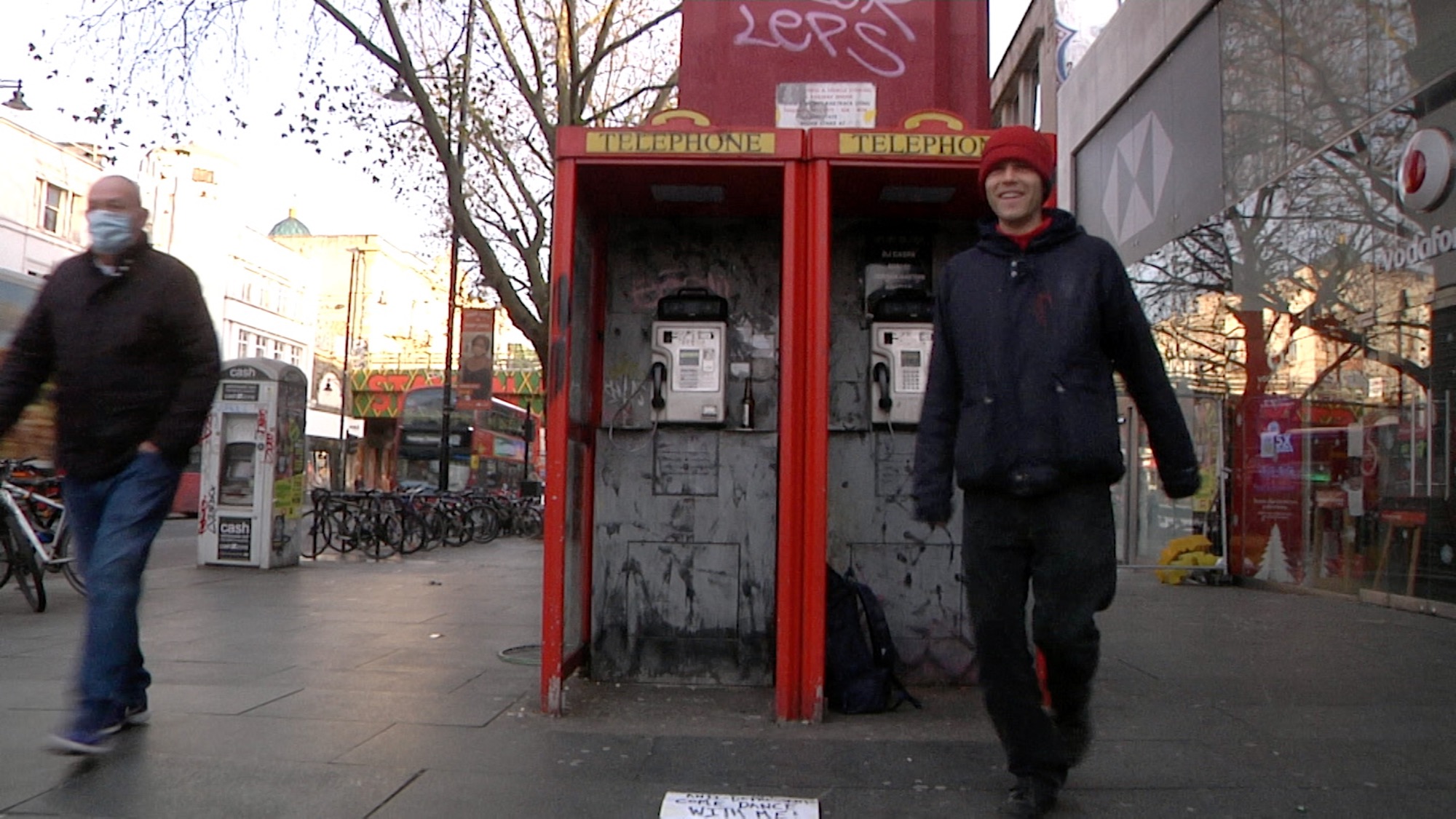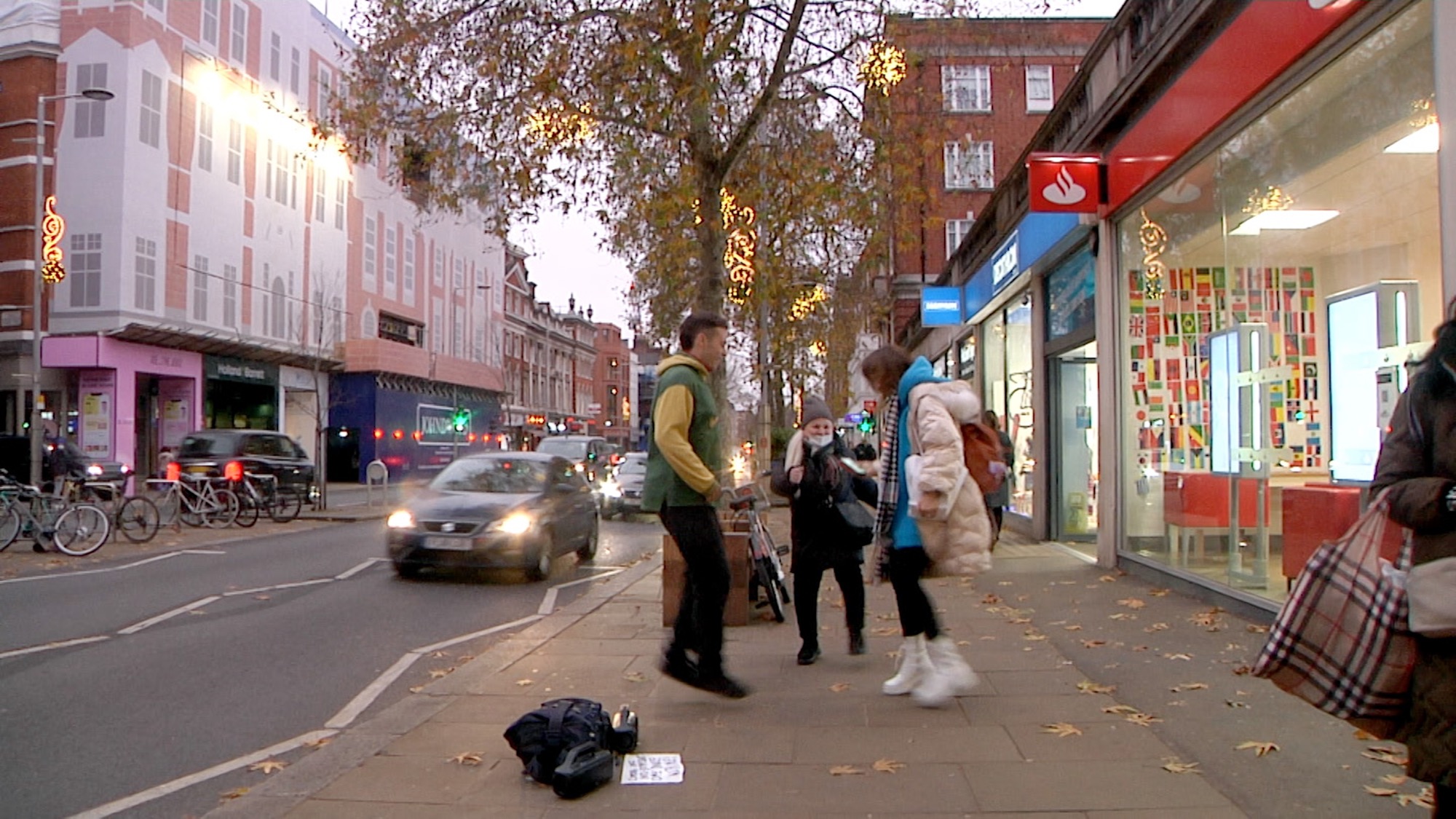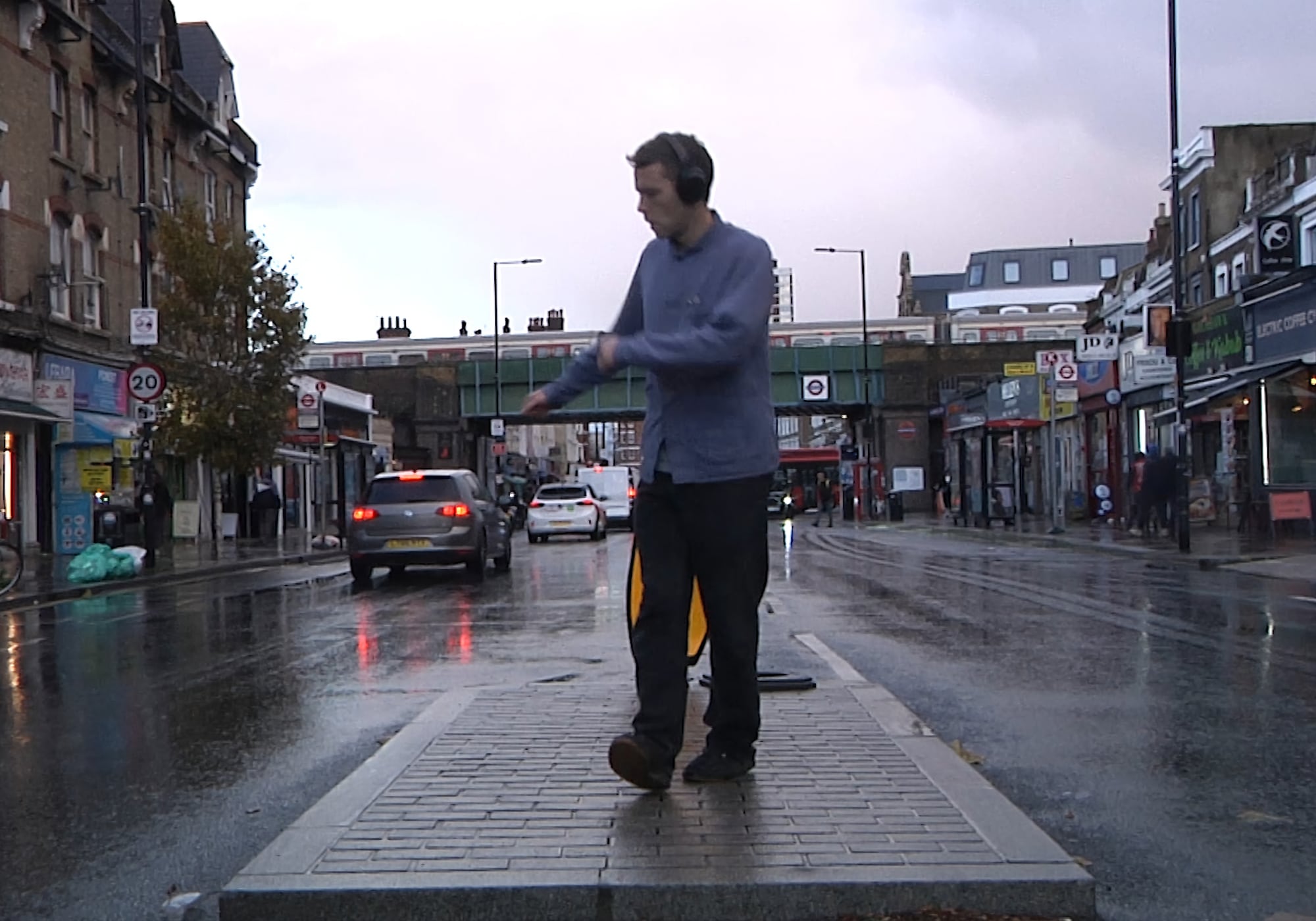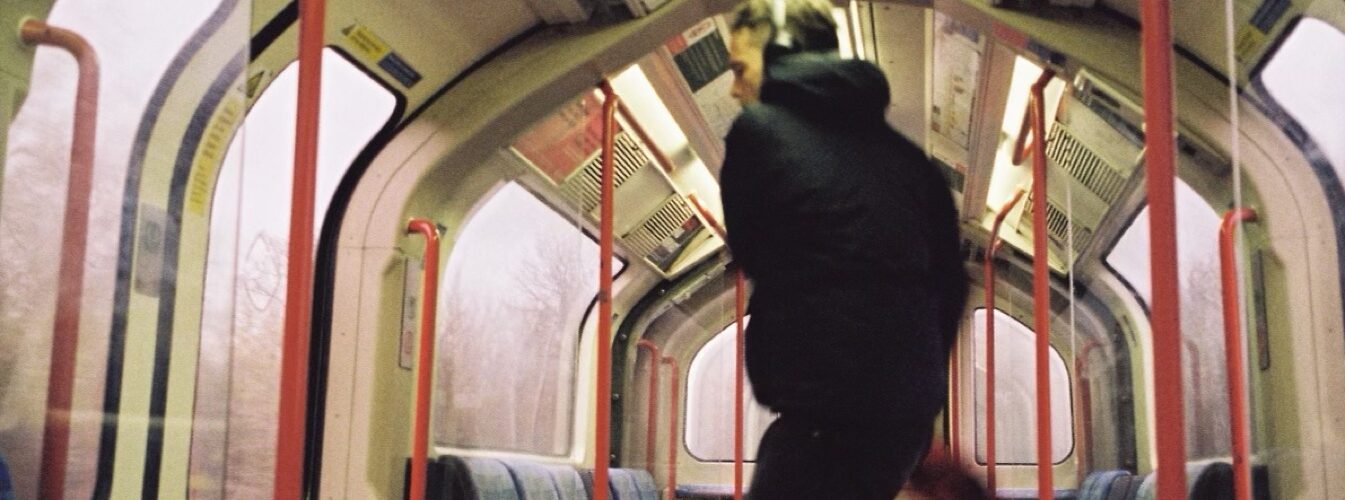
Dancing makes us happy. And as well as being a universal language, it causes our brains to release dopamine along with a whole host of endorphins so when filmmaker Jacob Lee made the brave decision to come off his antidepressants – he decided to dance his way through it…on film. Inspired by frenetic episodes of dance which served as a release valve for the pressure of his intricate work on stop motion animation projects, his BAFTA nominated documentary short A Drifting Up gradually took on a life of its own. The film’s distinctive montages of cities we know and love add their own sense of belonging, which alongside joyful interactions with engaging and empathetic members of the public makes A Drifting Up a genuine joy to watch. Lee offers us a refreshing snapshot of the struggles of mental health whilst not approaching the subject with any of the usual tired tropes associated with recovery. On the back of his BAFTA nomination earlier this month, we spoke to Lee about the amount of time you can dance alone with headphones on before getting bored, cutting his way through 100 hours of rushes in the edit and subconsciously choosing a camera which wouldn’t appeal too much to thieves.
[The following interview is also available to watch at the end of this article.]This is your first documentary, what drew you to this form of filmmaking?
I started off making stop-motion animations about three years ago in Bristol as I had an animation studio there. Often when animating over long periods of time I would listen to really loud electronic music, drink lots of coffee and whenever a couple of frames came together and it worked I’d start dancing to wherever I was listening to. I’ve been a huge fan of John Hopkins for ages and I’d listened to all of his recent music to such an extent that I found myself looking for something new. So I listened to one of his older albums and heard the song A Drifting Up and started doing this like a ridiculous Irish jig which features in the film. At first I thought I looked amazing, however after putting Photo Booth on my computer and videoing myself, I realised it looked terrible but it gave me the idea for the film.
The film is a journey of sorts from isolation to connection and an artistic montage of city life revolving around the theme of dance.
It takes 6 weeks to come off antidepressants and I tried to dance my way through it. I spent 6 weeks dancing on the streets of Bristol and London, first of all with my headphones on and then I bought a boombox and put out a sign inviting people to dance. I shot over 100 hours of footage over two months, and it took me 6 months to edit it down to the 10 minute film it has become. This process forced me to restart taking antidepressants which I’m at peace with. The film is a journey of sorts from isolation to connection and an artistic montage of city life revolving around the theme of dance.

Coming from a background in stop motion, how did you find the process of moving into the realm of documentary filmmaking?
It didn’t seem that different, it was mostly done on my own which is similar to my stop-motion animation. Obviously, I’m interacting with people in the public and with my friends but the actual making of the film was mostly done by myself. It didn’t seem like such a difference in production. The edit, which was such a huge part of it, benefited from me being comfortable with things like After Effects and editing software. I tried to incorporate things I learnt through doing animation into the edit of the film.
I was actually more nervous about people judging my music tastes.
You captured over 100 hours of footage which is incredible. Did you preplan when and where you were going to shoot?
No, the first three weeks were just me dancing with my headphones on. Then I became semi-obsessed with lamps turning on, I couldn’t work out whether they were light sensitive or whether it was a fixed time of day that they were turned on but it helped to guide the film. Between my solo dance sessions I was setting up the camera and capturing parts of city life which I thought were beautiful or in line with the vision I had for the film. After three weeks I bought a boombox and put out a sign saying, “Coming off antidepressants come dance with me” and took the headphones off to see if people responded to me.

What did you shoot on?
I think it’s the first digital camera to be fully digital, it’s one of the old skate cameras, the Panasonic AG-HPX170. It uses these amazing huge P2 cards with 32GBs. I partly chose the camera as it looked professional but it was a bit beaten up. It cost 500 quid so it would have been bad if it got nicked but it wouldn’t be the end of the world.
There were long periods of nothing, that’s the joy of editing as you can cut out long periods when no one was involved.
How did you find the shift from dancing on your own to using the boombox and interacting with the public?
It was interesting, with my headphones on I generally only danced for 10 minutes as it would just get boring. The first time I went out with the boombox I went to the City of London because I thought it was the most terrifying place I could go to but I was actually more nervous about people judging my music tastes. I stayed and I danced for an hour and a half, it was so much more fun for me and engaging when everyone was part of it even if they were just walking past. When you’ve got your headphones on you’re just a crazy person dancing on your own. I was really nervous but I left feeling really positive about the whole thing.
Were you surprised with how much people would engage with you?
There were long periods of nothing, that’s the joy of editing as you can cut out long periods when no one was involved. I felt really lucky to get the moments that I did get, I didn’t have a single person shouting anything negative at me. There are quite a few crazy people hanging around and you just chat to them but I never had any aggression around it. British people can definitely be standoffish at the beginning but when people stopped they properly got involved.

With such a large amount of footage, what was your approach for selecting material and shaping A Drifting Up in the edit?
The first two months were literally white knuckling watching all the footage through once which was pretty exhausting. I then cut it down from about 100 to 20-30 hours. I hadn’t really thought about what the film was going to be or how to organise it. There was just this constant source of incredible panic questioning what the hell I was going to do with it. I ended up splitting it up into lights, streets, me dancing and then dancing with others and nature. There was then one moment that felt like a big release, in the middle of the film there are three rainbow sections. Starting off with non-dancing imagery, going through each colour of the rainbow, then there are the birds flying across a rainbow building near Elephant and Castle moving into the tube poles montage. Once I got that bit edited, I was ecstatic and I felt that was the key into it. It was then a case of organising the film around that. Originally I was just going to use the Jon Hopkins song but a friend suggested using a mixture of music which brought that middle section to life.
There was just this constant source of incredible panic questioning what the hell I was going to do with it.
Was it a challenge to weave in the music with the dancing in the film to achieve that fluidity?
I get a lot of inspiration from music, the animations I’ve done alongside this film have very much been an imaginative response to the song itself. A lot of the sketchiness of that song informed the images I wanted to find and the snappy edit as well as the dance (which isn’t how I normally dance). It all grew organically from the song rather than the song itself being a soundtrack.

What does the BAFTA nomination mean to you?
It means so much, it’s really unexpected and I’m super grateful to BAFTA and to the people who voted for it. I’m sure like everyone else my dream is to make more films, I have more in my mind and hopefully this is a good start to getting those films made. I’m so grateful that I found filmmaking because I was lost for a long time. It’s just a great milestone and will hopefully help me get to where I want to.
So what’s next?
I’m doing a short film about imagination and reality on the tube. We’re shooting this month which I’m really excited and nervous about. It will be a challenge working with structured production in terms of DOP and procedures but that’s the direction I want to move into so I’m really excited for it.


